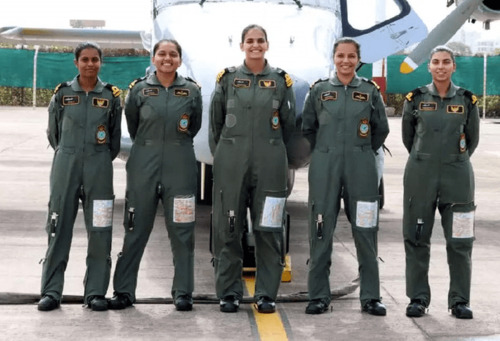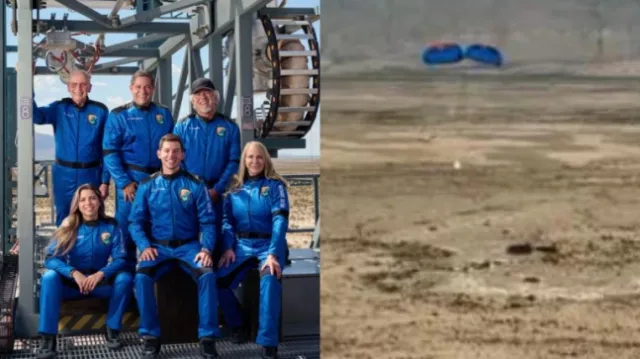North Eastern Space Applications Centre (NESAC) to execute 110 projects by 2024 (GS Paper 3, Science and Tech)

Why in news?
- Recently, the Union Minister of State Science and Technology Jitendra Singh said that North Eastern Space Applications Centre (NESAC), Shillong will execute 110 projects in eight North Eastern States by 2024.
Focus areas:
- NESAC has coordinated preparation of Plan of Actions (PoA) by the Nodal Departments of the eight States.
- These projects are in the domains of Agriculture, Water Resources, Forestry & Ecology, Planning & Development, UAV Remote Sensing and Disaster Management Support, with joint funding from MoDONER, DoS and State Governments.
Milestones achieved:
- NESAC has developed and achieved following major milestones for the North Eastern Region including
- Implementation of North Eastern Spatial Data Repository (NeSDR)
- Identification of potential areas for development of sericulture & horticulture,
- Remote Sensing based forest working plans & river atlas,
- Geospatial system for monitoring MoDONER sponsored projects & survey of Record of Forest Rights (RoFR),
- Flood Early Warning System (FLEWS) for Assam, and
- Training & capacity building, including for professionals from BIMSTEC region
- Satellite imaging-based inputs to support settling of border disputes between North Eastern States undertaken as per suggestion of MHA.
North Eastern Space Applications Centre (NESAC), Shillong:
- Established in 2000, jointly with North Eastern Council (NEC), NESAC is as an autonomous institution under Dept. of Space (DOS) to provide space technology inputs and services for the development of the North Eastern Region.
- NESAC is engaged in executing remote sensing application projects for natural resources management & infrastructure development, satellite communication-based applications in education; health & disaster management support, and training & capacity building in space technology & applications.
Indian Navy's All Woman Aircrew Creates History
(GS Paper 3, Defence)
Why in news?
- Five officers from the Indian Navy made history when they completed the first all-women independent maritime reconnaissance and surveillance mission in the North Arabian Sea onboard a state-of-the-art Dornier 228 aircraft.

Details:
- The five officers: Lieutenant Commander Aanchal Sharma, Lt Shivangi and Lt Apurva Gite, and Tactical and Sensor Officers, Lt Pooja Panda and SLt Pooja Shekhawat — are from Navy’s INAS 314, a frontline Naval Air Squadron, based at Naval Air Enclave at Porbandar.
- INAS 314, the sixth Dornier aircraft squadron, was commissioned at Gujarat’s Porbandar coast in November 2019.
- The squadron has a very strategic location and serves a crucial role in surveillance in the North Arabian Sea.
Empowering women:
- The Navy has been a frontrunner in driving transformation in the Armed Forces from inducting women pilots, their inclusion into the helicopter stream and conducting an all-women sailing circumnavigation expedition across the globe in 2018.
- In 2018, six naval officers had scripted history when they became the first all-woman military team and the first Asian women’s team to circumnavigate the globe.
Women in Agniveer:
- Even in the recently-concluded registration for the Agniveer scheme, the Navy received over 80,000 applications from women candidates.
- As of now, the Navy has 30 women officers at present sailing on different Indian Navy ships.
Blue Origin successfully launches first Egyptian, Portuguese to space
(GS Paper 3, Science and Tech)
Why in news?
- Recently, Jeff Bezos-led Blue Origin successfully launched six more people into space on its New Shepard spacecraft from launch Site One in Texas.
- The spacecraft lifted off on a brief journey to space, taking the crew to an altitude of 100 kilometers above the planet, before returning home on a parachute.

Key Highlights:
- Blue Origin created a new record as it took the first Egyptian and Portuguese-origin passengers to space.
- Sara Sabry became to first Egyptian to go to space alongside Mário Ferreira, who was the first Portuguese to journey to space.
- The two were joined by Dude Perfect cofounder Coby Cotton, British-American mountaineer Vanessa O’Brien, technology leader Clint Kelly III and telecommunications executive Steve Young.
Karman Line:
- The spacecraft reached a top speed of Mach 3, three times the speed of sound, and three minutes into the flight, New Shepard separated from the booster and the passengers began experiencing zero gravity and weightlessness.
- During the flight, the passengers touched the Karman Line, nearly 100 kilometers above the planet, which is officially designated as space. They unstrap and experienced zero gravity while flying in the spacecraft, which then began its re-entry and land in the Texas desert.
Background:
- This is the sixth crewed launch for Blue Origin, which began human flights in 2021, launching its founder Jeff Bezos and his brother Mark into space.
- It will be the third flight of the year and the 22nd in the overall development of the spacecraft that has spanned over two decades.
‘Danuri’ South Korea’s first spacecraft to the moon
(GS Paper 3, Science and Tech)
Why in news?
- Recently, South Korea became the seventh country in the world to launch a mission to the Moon as its orbiter hitched a ride on SpaceX Falcon-9.
- The Korea Pathfinder Lunar Orbiter, nicknamed Danuri, lifted off from launch complex at the Cape Canaveral Space Force Station in Cape Canaveral.
- This is the first lunar mission by South Korea, which recently developed a space rocket launch capability.

Collaboration:
- The lunar mission has been jointly developed by NASA and the Korea Aerospace Research Institute (KARI).
Salient features:
- Danuri features a boxy, solar-powered satellite designed to skim just 62 miles (100 kilometers) above the lunar surface, during which it will collect geologic and other data from this low polar orbit.
- Danuri, which translates to enjoying the moon in Korean, has an expected lifetime of one year around the Moon and will orbit in a circular orbit at an altitude of 100 km and a 90-degree inclination angle.
- Built at nearly $180 million, the spacecraft is carrying six science instruments, including a camera for NASA.
- It’s designed to peer into the permanently shadowed, ice-filled craters at the lunar poles.
- NASA favours the lunar south pole for future astronaut outposts because of evidence of frozen water.
New Lunar Missions:
- The Moon is set to be the next big target for countries across the world with India, Russia, and Japan planning to launch new lunar missions later this year or next.
- Meanwhile, a slew of private companies in the US and elsewhere are also in the fray. The biggest among these missions will be NASA’s Space Launch System, which could be launched later this month.
- The Space Launch System aims to return humans to the Moon in the future.
Space Program of South Korea:
- South Korea is slowly progressing in its space program, the country in June successfully launched a package of satellites into orbit around Earth for the first time using its own rocket.
- South Korea plans to land its own spacecraft on the moon a robotic probe, by 2030 or so.
- Space launches have long been a sensitive issue on the Korean peninsula, where North Korea faces international sanctions over its nuclear-armed ballistic missile program.
- South Korea says its space program is for peaceful and scientific purposes and any military use of the technology, such as in spy satellites, is for its defense.
Way Forward:
- The spacecraft is taking a long, roundabout path to the Moon in order to conserve fuel and will arrive at its destination in mid-December.
- If successful, the spacecraft will join India's Chandrayaan-2 and Nasa's Lunar Reconnaissance Orbiter (LRO) around Earth's natural satellite as new missions make a beeline for the Moon.





